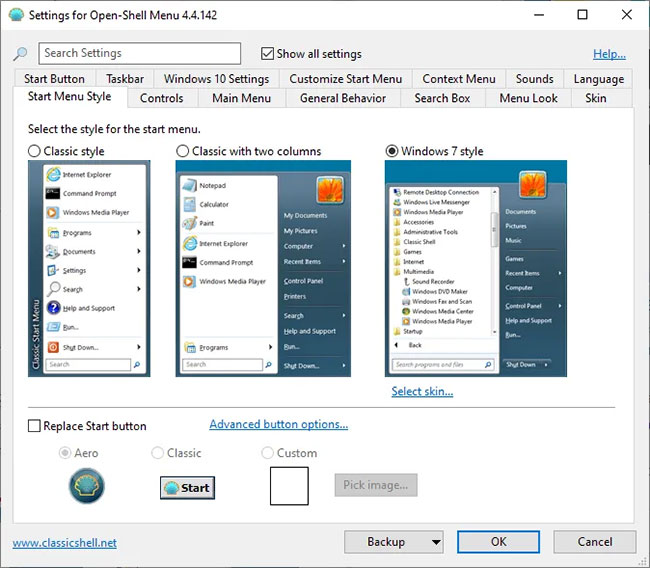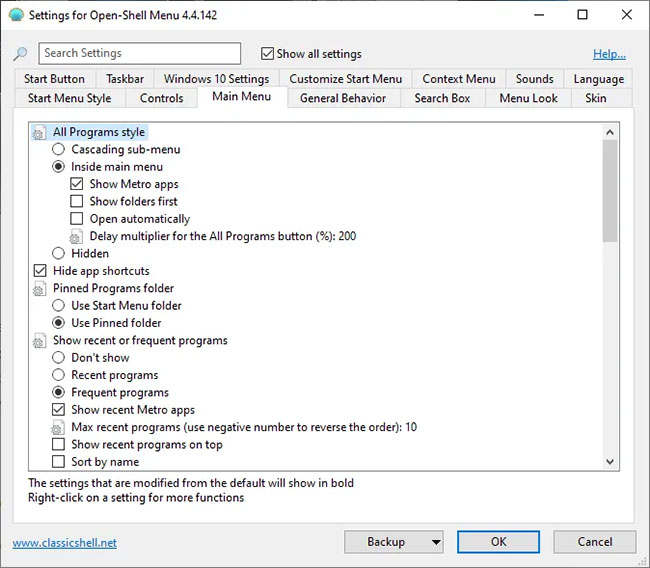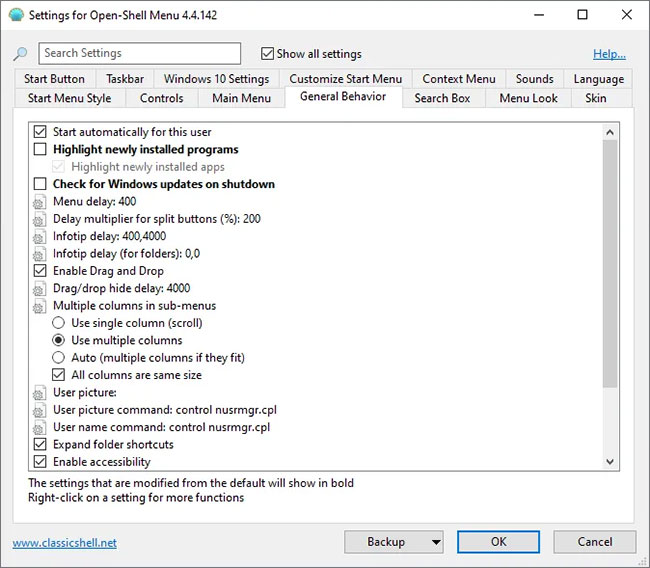How to use Open-Shell to create your own Start menu on Windows 10
To address all of these existing problems, tipsmake found a free, open-source application that you can download today to create your own Start menu - Open-Shell.
Although the look and feel of the Windows Start menu has evolved and changed, its functionality has largely remained the same. For those who love the Start menu in Windows 7, the Windows 10 Start menu may not be very familiar. It's not very customizable and comes with features you might not want, like Cortana, and may even have problems with search.
The best Start menu replacement out there
There are plenty of desktop replacement and customization software out there, but if you're looking to customize your Start menu, then Open-Shell is the app for you. Open-Shell, formerly Classic Shell, ended development in 2017, then picked up and switched to open source Open-Shell.
Classic Shell and Open-Shell have identical functionality and similar interface. The main features of Open-Shell are as follows:
- Classic Start Menu style for Windows 7, 8, 8.1, 10
- Toolbar for Windows Explorer
- Classic user interface (Windows 7 only)
- Displays the file sizes in the Explorer status bar
- Title bar and status bar for Internet Explorer
All of these advertised features are in a powerful freeware that lets you fine-tune almost every part of the Start menu, mix and match Start menu styles, functions, and features across Windows operating system.
How to use Open-Shell
You will first have to download and run the Open-Shell setup, available on GitHub. Just follow the prompts and open the app. Once run, you will be able to easily access Open-Shell's settings by right-clicking on the Start menu icon. Looking at the installs of Open-Shell for the first time can be overwhelming. But you'll only need to focus on a few tabs.

In the ' Start Menu Style ' tab , you can choose your style, look and custom buttons. These are the biggest changes to the Start menu and will completely change the look and feel of the Windows 10 menu. Other tabs allow you to further tweak and customize individual parts of the Start menu.
Style refers to the general format and layout of the Start menu. You can choose between the classic Windows 2000 style, the two-column style reminiscent of Windows 7, and then the actual Windows 7 style. Windows 7 style is the only option in 3 styles with options for interface, of which there are 6 options. If you want to change the Start menu icon to something more vintage or to a custom image, you can also do that from the ' Start Menu Style ' tab .

The other main tabs you'll want to see when setting up your Start menu are the " Main Menu " and " General Behavior " tabs . Under the ' Main Menu ' tab , you will find many screen-related settings that you see when you open the Start menu i.e. the main menu of the Start menu. You can change things like how All Programs, Pinned Programs and Recently Used Programs work in the Start menu, among many more.
Thankfully, the other options of the Open-Shell settings menu are easy to understand, so all the adjustable settings in the ' Main Menu ' tab will be directly related to the main menu and don't overlap much with the other tab.

It's no surprise that the ' General Behavior ' tab contains Start menu settings for general behavior, such as how fast you can switch from one menu to another, how long does it take to get annotations of information, take how long it takes to drag / drop something from the Start menu to somewhere else, etc. For example, if you don't know how much menu lag you want, don't overthink. The default settings aren't too bad, and you can adjust everything if you find something annoying.
Here's the best way to use the other tabs on Open-Shell's settings page. Your daily digital life is evident through the Start menu. If you find yourself starting to frequently access a certain folder or having trouble trying to access a certain shortcut in the Start menu, you won't be forced to get used to it but instead, can open settings. Install Open-Shell, go to the relevant tab and edit the necessary settings.
- How to Use the Windows 10 Start Menu
- How to fix the error can not open the Start Menu on Windows 10
- 3 ways to fix Start Menu on Windows 10 stopped working
- How to bring the traditional Start and Start Menu back on Windows 8?
- How to pin any file to Start Menu on Windows 10
- Trick to Run commands on Start Menu and Taskbar on Windows 10